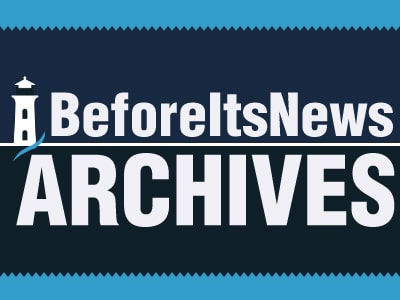The Fed's Balance Sheet

How big is the U.S. Federal Reserve’s balance sheet? What kind of assets does it hold? What is the value of those assets?
Three questions, the answers for which we’ve presented in the following two interactive charts! In the first chart below, we show the value of the major asset categories the U.S. Federal Reserve has held on its balance sheet in each week from 18 December 2002 through 14 August 2019, which provides the data needed to answer all three questions. [If you're accessing this article that republishes our RSS news feed, you might consider clicking through to our site to access a working version of the interactive chart, or if you prefer, you can click here for a static version.]
Our second chart presents the same data, but this time in a stacked area format, which makes it easier to find the answer to the first question of how big the Fed’s balance sheet has been from 18 December 2002 through 14 August 2019. [Click here for a static version of this second chart.]
Starting at 18 December 2002, the Fed’s balance sheet consisted mainly of U.S. Treasuries, which grew from $629 billion at that time to roughly $800 billion in late 2007. The onset of the Great Recession saw the Fed’s balance sheet crash to a level of roughly $450 billion by mid-2008, after which the size of the Fed’s balance sheet inflated in three major phases through its quantitative easing monetary policy, in which it sought to prop up government supported agencies such as Fannie Mae and Freddie Mac by buying bonds these entities issued to support their operations (Federal Agency Debt), while also buying up the Mortgage Backed Securities these institutions issued to prop up the U.S. housing market. At the same time, the Fed also funded the U.S. government’s deficit spending by buying copious amounts of U.S. Treasuries.
By January 2015, the combined amount of all these assets averaged roughly $4.25 trillion, which the Fed held stable at this level until late 2017, when the Fed began actively reducing the amount of its balance sheet holdings through its quantitative tightening monetary policy. Through 14 August 2019, the combined total of these three major asset categories fell to $3.6 trillion, $625 billion less than the average level it held from 2015 through most of 2017.
If we use Morgan Stanley’s estimate that each $200 billion reduction in the Fed’s balance sheet has the equivalent effect of a 0.25% hike in the Federal Funds Rate, the Fed’s active balance sheet reduction quantitative tightening program since late 2017 has had the equivalent effect of increasing the Federal Funds Rate by an additional 0.8% over its official target range of 2.25-2.50% through the end of July 2019.
On 31 July 2019, the Fed acted to cut its target range for the Federal Funds Rate by a quarter percentage point and to suspend its balance sheet reduction program, effective 1 August 2019.
References
U.S. Federal Reserve. U.S. Treasury Securities Held by the Federal Reserve: All Maturities. [Online Database]. Accessed 17 August 2019.
U.S. Federal Reserve. Federal Agency Debt Securities Held by the Federal Reserve: All Maturities. [Online Database]. Accessed 17 August 2019.
U.S. Federal Reserve. Assets: Securities Held Outright: Mortgage-Backed Securities. [Online Database]. Accessed 17 August 2019.
Anyone can join.
Anyone can contribute.
Anyone can become informed about their world.
"United We Stand" Click Here To Create Your Personal Citizen Journalist Account Today, Be Sure To Invite Your Friends.
Before It’s News® is a community of individuals who report on what’s going on around them, from all around the world. Anyone can join. Anyone can contribute. Anyone can become informed about their world. "United We Stand" Click Here To Create Your Personal Citizen Journalist Account Today, Be Sure To Invite Your Friends.
LION'S MANE PRODUCT
Try Our Lion’s Mane WHOLE MIND Nootropic Blend 60 Capsules
Mushrooms are having a moment. One fabulous fungus in particular, lion’s mane, may help improve memory, depression and anxiety symptoms. They are also an excellent source of nutrients that show promise as a therapy for dementia, and other neurodegenerative diseases. If you’re living with anxiety or depression, you may be curious about all the therapy options out there — including the natural ones.Our Lion’s Mane WHOLE MIND Nootropic Blend has been formulated to utilize the potency of Lion’s mane but also include the benefits of four other Highly Beneficial Mushrooms. Synergistically, they work together to Build your health through improving cognitive function and immunity regardless of your age. Our Nootropic not only improves your Cognitive Function and Activates your Immune System, but it benefits growth of Essential Gut Flora, further enhancing your Vitality.
Our Formula includes: Lion’s Mane Mushrooms which Increase Brain Power through nerve growth, lessen anxiety, reduce depression, and improve concentration. Its an excellent adaptogen, promotes sleep and improves immunity. Shiitake Mushrooms which Fight cancer cells and infectious disease, boost the immune system, promotes brain function, and serves as a source of B vitamins. Maitake Mushrooms which regulate blood sugar levels of diabetics, reduce hypertension and boosts the immune system. Reishi Mushrooms which Fight inflammation, liver disease, fatigue, tumor growth and cancer. They Improve skin disorders and soothes digestive problems, stomach ulcers and leaky gut syndrome. Chaga Mushrooms which have anti-aging effects, boost immune function, improve stamina and athletic performance, even act as a natural aphrodisiac, fighting diabetes and improving liver function. Try Our Lion’s Mane WHOLE MIND Nootropic Blend 60 Capsules Today. Be 100% Satisfied or Receive a Full Money Back Guarantee. Order Yours Today by Following This Link.






